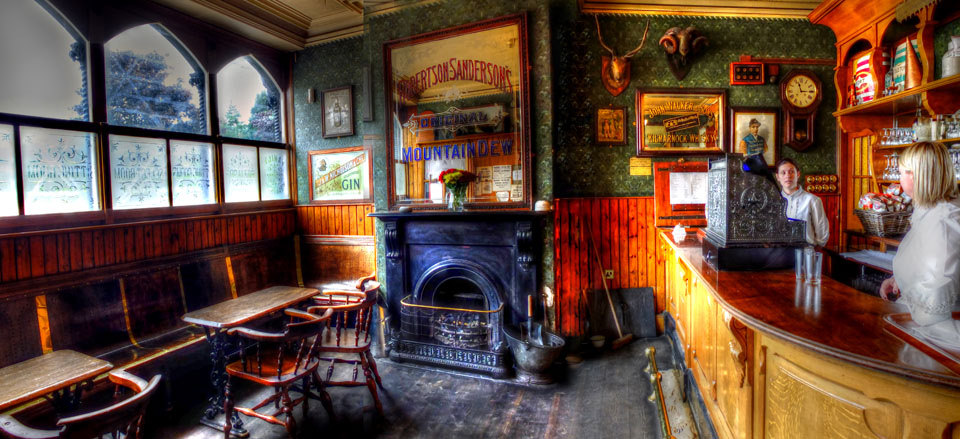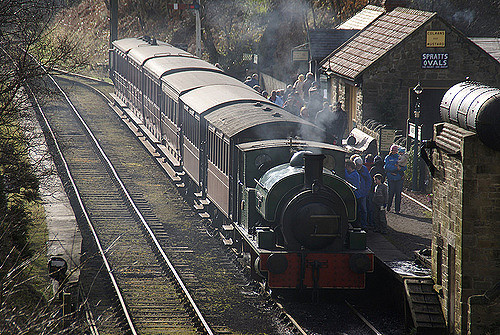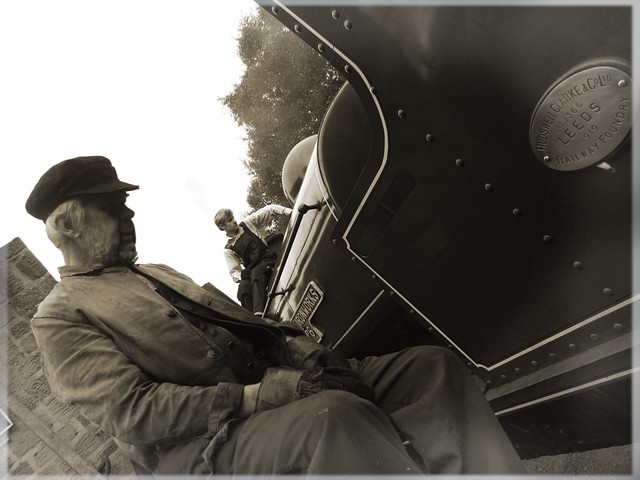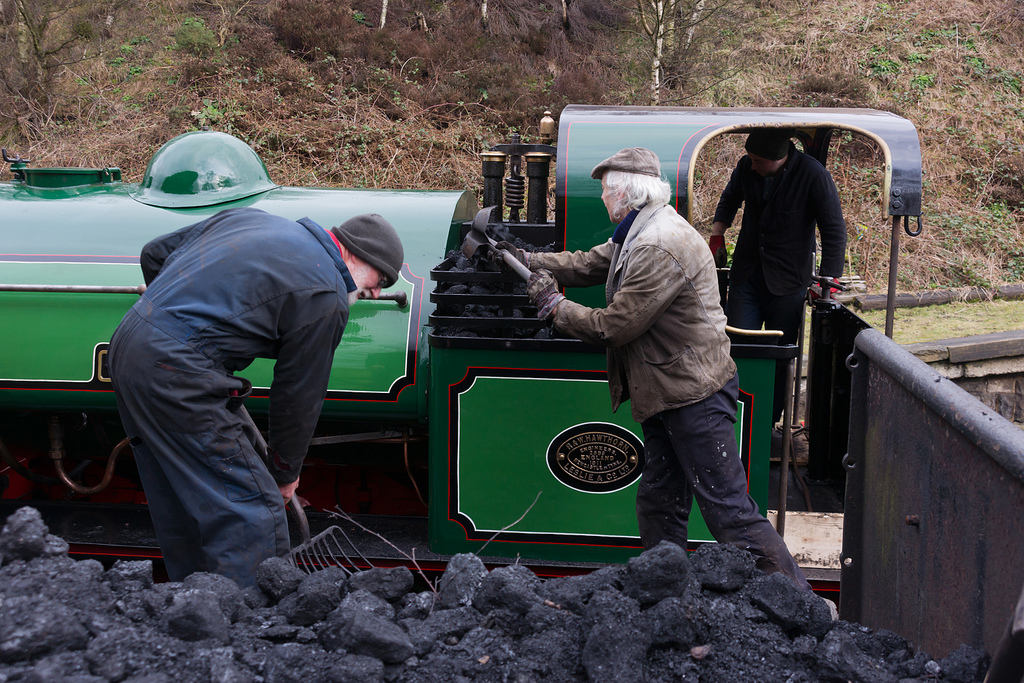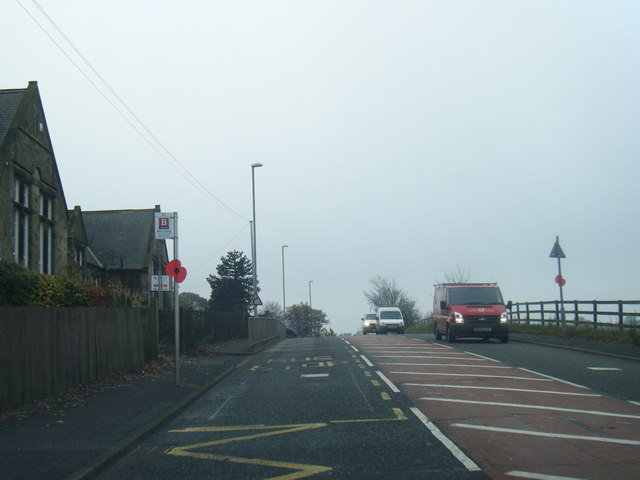Topics > Transport and Travel > Railway > Tanfield Railway
Tanfield Railway
"When the Tanfield Railway - or waggonway as it was known at the time - was built in 1725, it was a revelation. Its massive engineering was unlike anything else in its era, or even since the Roman Empire. It was a triumph of engineering over nature, a clear signal that a new industrial age was upon the world, and that railways would play a massive part. First laid down more than a quarter of a century before the first railway officially sanctioned by government, over 75 years before the first steam locomotive..." (Tanfield Railway)
The Tanfield Railway is a standard gauge heritage railway in Gateshead and County Durham, England. Running on part of a former colliery wooden wagonway, later a steam railway, it operates preserved industrial diesel and steam tank locomotives. The railway operates a passenger service on Sundays all year round, as well as demonstration freight trains. The line runs between a southern terminus at East Tanfield, Durham, to a northern terminus at Sunniside, Gateshead, with the main station, Andrews House situated near to the Marley Hill engine shed. A halt also serves the historic site of the Causey Arch. The railway claims to be the oldest working railway in the world.
Colliery Railway
The Tanfield Railway was originally built to transport coal from the collieries of County Durham, to the staithes on the River Tyne, for onward transport in colliers (bulk coal carrying ships). The oldest part of the original Tanfield Railway, located to the north east of the present heritage line, in the Lobley Hill area, dated from 1647, and was in continuous use until final closure in 1964.
The route and structures of the oldest section of the now preserved part of the line, between Sunniside and Causey, dates from 1725, and is thus claimed to be the World's oldest working railway. The Middleton Railway claims to be the oldest working railway, on the basis that it was the first railway granted powers under the first railway Act of Parliament in 1758. The Causey to East Tanfield section was built in 1839.
The Marley Hill engine shed was built in 1854, and in use until 1970. The shed first housed a winding engine before the arrival of locomotives. The shed was originally on the Bowes Railway, with locos used on the Tanfield branch stabled at the nearby Bowes Bridge MPD (a sub-shed of Gateshead) whose coaling stage and turntable pit are still visible adjacent to the track between Andrews House and Sunniside. The headshunt by the signal box is the point where the Bowes Railway crossed the Tanfield branch. When the line was re-opened a curve was installed to allow trains access to the shed. It is thought to be the oldest engine shed in the world still used for its original function. Although the line to the shed closed in 1962, it remained in use servicing other colliery railway's locomotives in the area.
Originally a wooden railed horse drawn wagonway, conversion to a conventional steel railed railway began in 1837, and by 1840 was complete as far as Tanfield Moor Colliery. In 1881 the railway was converted to steam locomotive operation, becoming part of the North Eastern Railway. Although still primarily a freight railway, it did carry some passengers. The East Tanfield Colliery closed in 1964, and the railway, by this time owned by the National Coal Board, was closed and the track lifted.
Preservation
The early years of the railway as a preservation project concentrated on Marley Hill, preparing locos for steaming, working on the shed structure and acquiring basic needs such as water and electricity. Locomotives No.21 and No.5 (Malleable) were steamed in public in 1973. The first passenger train ran for a week August 1975, using locomotives No.21, No.32 and Sir Cecil A Cochrane, and a small carriage acquired from British Steel on Teesside.
The preserved line was first built from Marley Hill to the current northern terminus, Sunniside Station, with passenger trains beginning on 2 July 1981, and an official opening ceremony on 14 July 1982. Andrews House station just south of Marley Hill sheds was completed between 1987 and 1989 and was equipped with platforms, a water tower, a station building and a footbridge. The first train south to Causey was on 27 July 1991, with the official opening ceremony being held on 15 August 1991. The first train further south to the current end of the line at East Tanfield occurred on 18 October 1992. East Tanfield Station itself was opened in 1997. The Causey to Tanfield section is through a wood lined gorge.
Part of the reason the line was preserved was the fact Marley Hill shed remained open until 1970. The vintage machinery in the workshop is still capable of full locomotive overhauls. The oldest locomotive on the railway was built in Gateshead in 1873, and all of the railway's carriage stock dates from the 19th Century.
Causey Arch
The current preserved line passes near to Causey Arch, the oldest surviving railway bridge in the world. It was built to carry a new branch from the route of the now preserved line, to a site known as Dawson's Drift. Built between 1725 and 1727, at and , it was the largest single-span bridge in Britain, and remained so for 30 years.
Visit the page: Tanfield Railway for references and further details. You can contribute to this article on Wikipedia.

from Beamish Museum (youtube)
Beamish Engine Coffee Pot No.1 at Tanfield Railway
Pinned by Pat Thomson

from Beamish (flickr)
1933 built Armstrong Whitworth No.2 from the Tanfield Railway
Pinned by Pat Thomson

from http://www.sunnisidelocalhist…
Tanfield Waggonway
- "For centuries the North-East was the main coal-producing area of England because of its easily-accessible seams and navigable rivers. As the demand for coal increased during the eighteenth century, new …
Added by
Simon Cotterill

from http://twsitelines.info/SMR/1…
Tyne and Wear HER(1665): Grand Lease Wagonway
- "The well-known Tanfield Way (HER REF. 1023) was partly built upon the Whickham Grand Lease Way from Dunston Haugh to Lobley Hill. The Whickham Grand Lease Way, as the world's …
Added by
Simon Cotterill

from Youtube (youtube)
Tanfield Railway 'Legends of Industry' Gala - 20th June 2015
Pinned by Simon Cotterill

Co-Curate Page
Tanfield
- Overview History Map Street View Tanfield is a former mining village near Stanley in County Durham. The village has a long history, including a church daing back to the 10th …

Co-Curate Page
1725
- < 1724 | 1725 | 1726 > In Northern England: Tanfield Railway (waggonway) built in 1725 Landlord of The Cross inn, Alwick, died cleaning the 'Dirty Bottles' in 1725 Quaker Meeting …

Co-Curate Page
Waggonways
- "In the early 1600s a Nottinghamshire businessman called Huntingdon Beaumont came to Northumberland and laid rails from collieries near Blyth to a shipping point on the coast. His wooden waggonway …

Co-Curate Page
Causey Arch
- Overview History Map Causey Arch bridge near Tanfield was built by the Grand Allies in 1726 and is renowned to be the world's oldest surviving single-arch railway bridge. Horse-drawn wagons …


from Beamish Museum (youtube)
Beamish Engine Coffee Pot No.1 at Tanfield Railway
Pinned by Pat Thomson

from Beamish (flickr)
1933 built Armstrong Whitworth No.2 from the Tanfield Railway
Pinned by Pat Thomson

from http://www.sunnisidelocalhist…
Tanfield Waggonway
- "For centuries the North-East was the main coal-producing area of England because of its easily-accessible seams and navigable rivers. As the demand for coal increased during the eighteenth century, new …
Added by
Simon Cotterill

from http://twsitelines.info/SMR/1…
Tyne and Wear HER(1665): Grand Lease Wagonway
- "The well-known Tanfield Way (HER REF. 1023) was partly built upon the Whickham Grand Lease Way from Dunston Haugh to Lobley Hill. The Whickham Grand Lease Way, as the world's …
Added by
Simon Cotterill

from Youtube (youtube)
Tanfield Railway 'Legends of Industry' Gala - 20th June 2015
Pinned by Simon Cotterill

Co-Curate Page
Tanfield
- Overview History Map Street View Tanfield is a former mining village near Stanley in County Durham. The village has a long history, including a church daing back to the 10th …

Co-Curate Page
1725
- < 1724 | 1725 | 1726 > In Northern England: Tanfield Railway (waggonway) built in 1725 Landlord of The Cross inn, Alwick, died cleaning the 'Dirty Bottles' in 1725 Quaker Meeting …

Co-Curate Page
Waggonways
- "In the early 1600s a Nottinghamshire businessman called Huntingdon Beaumont came to Northumberland and laid rails from collieries near Blyth to a shipping point on the coast. His wooden waggonway …








